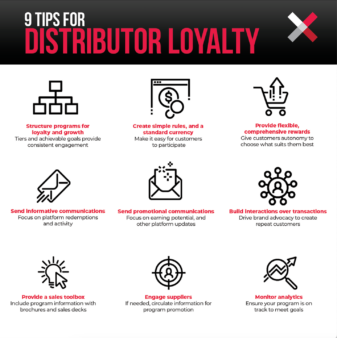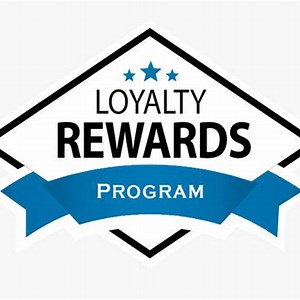HVACR distributors and manufacturers are fighting to retain market share and seek growth in a challenging market. Typically, the most profitable strategy to strengthen, deepen and broaden opportunities within existing customers.
An effective tool to achieving this is also a time-tested strategy for many HVACR distributors and some manufacturers … contractor incentive and loyalty strategies.
Having developed these programs for over 30 years in multiple industries, I can attest to how they can cost-effectively drive growth, when developed well. And a major key is continuous review so that they do not become an embedded expectation of a “giveaway.”
Recently I was talking to Mike McWilliams, VP Client Strategy & Marketing for Next Level Performance. Other than discussing how their clients are using incentives and loyalty initiatives (and there are a difference), we also talked about the challenge of programs that, shall we say, become “long in the tooth” and are rarely reviewed other than “what’s the next destination / reward.” We talked that the most successful companies, and programs, challenge the status quo.
I offered him the opportunity to share his thoughts and the challenges he sees that many companies face.
Standing Out in a Sea of Sameness
We’ve all heard the adage that “it costs five times more to acquire a new customer than it does to retain an existing one.” It’s been proven in study after study, and while the 5X figure might even be low in some businesses, one thing is likely: customers are valuable, they take a while to find, they cost money to win, and it’s cheaper to keep them than it is to find new ones to replace them.
Loyalty is a smart business play.
It’s also an ever-changing practice, in an ever-changing purchase ecosystem. And for distributors, it’s more important today than any time we can recall. Here’s why:
What’s the Difference?
As the supply chain problems of the pandemic-era subside, today’s distributors are finding a new challenge for sales – how do we differentiate our manufacturers’ product in a period of availability?
Many B2B companies see no difference between suppliers because they see little difference in the products. Too often companies fail to communicate an advantage.
The rise of digital buying has led to a steep decline in direct interactions with sales teams, further compounding the problem and limiting the opportunity to communicate your value proposition.
And B2B International reports that the average proportion of b2b markets that prioritize price over all other decision drivers is only 20%.
If product and price aren’t the differentiator … and your people aren’t the differentiator … then what is?
What Does the Customer Think?
In 2021, Channel Marketing Group, on behalf of a client, solicited contractor feedback regarding their loyalty to distributors, and the role of incentives, loyalty, and rebate programs. When the question was asked, “would you switch business to a distributor who offers an incentive so your company could earn the reward?” 37% of respondents said “yes, if all else is equal”, and another 32% shared “possibly”.
Many distributors fully understand the importance of a contractor or customer loyalty program: they help to foster long-term relationships, increase retention, and can help to increase sales and revenue. If done right, loyalty programs also can provide valuable data and insights into customer behaviors and purchase preferences.
Respondents to the Channel Marketing Group research shared that 61% of their distributors did, or had, offered an incentive or loyalty program. In the battle for customer retention, incentive and loyalty programs are differentiators among competitors.
How to Create Loyalty that Works
What’s best for your program if the goal is to differentiate you from your competition, capture mindshare, and drive the bottom line? There are many variables.
The right program has the right goals and targets the right contractors with a choice of rewards. The program should reward new and existing customers for entrusting you with a share of their business and should encourage growth.
While more research is needed, a 2019 study by Montoya and Flores highlights the increased perceived value of non-cash rewards. Successful non-cash programs can include merchandise that carries your brand, experiences to create lasting memories and stronger relationships, points that provide the ultimate gift of choice, and group travel to transform the relationship between your company and its customers into one that is personal.
There’s a strong case to be made that it has to complement the programs offered by your suppliers, not compete with them.
So, is your program helping you differentiate?
Commit to a Loyalty “Health Check”
Whether you’re designing your loyalty strategy from the ground up, or want to assess your current program, the following three-phase assessment strategy can help create your own loyalty “health check”:
 Phase 1 – Situation Analysis: Begin with an overview to define objectives, a competitive analysis to understand the landscape, identification of trends and benchmarks, and, if you are operating a current program, an economic analysis of your loyalty offering. The outcome will help your team align on your definition of loyalty, and the high-level needs of your customer.
Phase 1 – Situation Analysis: Begin with an overview to define objectives, a competitive analysis to understand the landscape, identification of trends and benchmarks, and, if you are operating a current program, an economic analysis of your loyalty offering. The outcome will help your team align on your definition of loyalty, and the high-level needs of your customer.- Phase 2 – Define the Vision and Journey: Create a three-year roadmap by clarifying your value proposition, mapping your customer journey, and committing to a high-level timeline for completion. The outcome feeds a go / no-go decision to create a loyalty program that differentiates your brand.
- Phase 3 – Program Design: Determine rewards and communications to amplify your value proposition, select knowledgeable partners who understand your vision and bring expertise, and bring loyalty to life.
Trusted Partners and Best Practices
Loyalty sounds complex, and that’s because it is. A proven third-party loyalty provider can provide great value for your loyalty needs. This can include saving time and money on development, maintenance, and updates; accessing best practices like those found here and in our best practices graphic; insights, and support from experts; and leveraging an established network of partnerships to deliver maximum value for your program.”
About Next Level Performance
Mike McWilliams is Vice President, Client Strategy & Marketing for Next Level Performance. The company is an industry leader in the design and implementation of loyalty programs, sales incentives, reward strategies, and meetings and event solutions since 1976. They create and deliver sales growth programs for distributors in the building and construction trades, including electrical and building materials, among others.
Thoughts
- Now is the time that many companies are starting to develop their 2025 strategy. Loyalty / incentive strategies for contractors should be a consideration.
- Why should they be a consideration? Because they can be a cost-effective business driver, when conceived and modeled correctly.
- As mentioned, I’ve developed programs for many years … and for over 60 industries as years ago I worked for a couple of performance marketing companies. Today Channel Marketing Group designs these strategies for clients as part of the client’s overall business / marketing strategy. We do not get involved in implementation. Alternatively, there are quality performance marketing companies such as Next Level Performance that do this for a living and can share successes, and probably a few failures, from other clients / industries.
- If you already have a program, you’re not being disloyal to your provider if you “keep your ears open.” Be upfront that you have an existing, successful relationship but are open to ideas. You need to be loyal to your customers. And give your incumbent partner the opportunity to “roll-up their sleeves” and relook at your program.
At the end of the day, you’re fighting for share in your market. You’re fighting for mindshare from your customers and their staff. You need the best ideas to help you capture loyalty, capture market share, and capture growth.
If you have questions or would like a 3rd party opinion, reach out or email me. If you’re thinking about a loyalty / incentive rewards strategy, consider Mike’s 9 tips.
